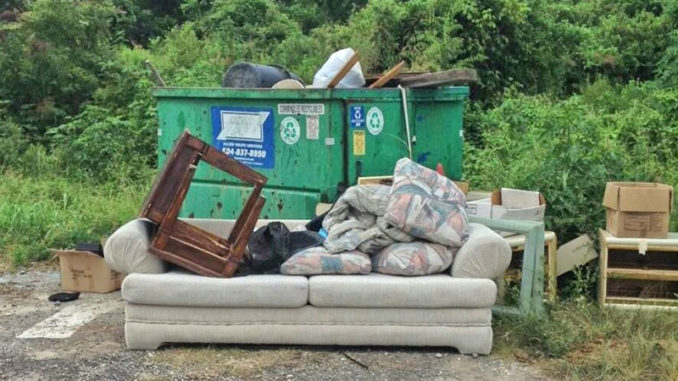
Amid major changes to St. Charles Parish’s recycling program, the parish will ask residents if they want to resume curbside recycling.
“We want to survey the residents on it because it’s a mandatory charge on the water bill,” said Chandra Sampey, the parish’s contract monitor. “The parish can not pay the company to run their truck along the residential streets in the parish without all residents paying the charge.”
The survey will be placed in water bills in early April.
Sampey estimated the service could cost residents $2.50 to $3 a month for weekly collection.
Participation will be a key decider in whether the parish restores the program. The parish averaged 25 percent in its initial program, a number that was considered too low to resume the effort.
But the council recently supported the move to revisit curbside recycling.
The decision came after the parish’s 21 recycling sites were overrun with illegal dumping with items like appliances, furniture and construction debris. They became so bad that Sampey said residents in some areas asked the dumpsters be removed. They also began requiring considerable parish resources in removing the illegal items.
“This is something this administration has been interested in since coming into office,” she said. “They just want to be sure to offer something reasonably priced and see if the interest would be there.”
For nearly 12 years (1993 – 2005), the parish offered curbside recycling but Hurricane Katrina ended the main facility in Metairie, Sampey said. Recycled materials would have had to be brought to Baton Rouge, making the program unfeasible.
[pullquote]“This is something this administration has been interested in since coming into office.”- Chandra Sampey, the parish’s contract monitor[/pullquote]If approved, the program would come with little additional cost and New Orleans Recycle would take the recycled items.
Councilman Paul Hogan said he supports the move provided participation is at or above 50 percent of residents.
“To bring back curbside participation, everyone has to pay,” Hogan said. “It makes it hard to charge for that when everyone doesn’t participate.”
The councilman also agreed the condition of the recycling sites warranted closing them and looking at options.
“I much rather see stuff recycled rather than go to a landfill, but you have to make sure it can be sold and used,” Hogan said. “You don’t want it to go to a recycling facility and it goes to a landfill anyway. I know that’s happened in the past.”
On Feb. 1, the parish will implement a plan calling for two recycling sites in East and West bank parks with improved lighting, security cameras and two 25-foot long dumpsters. The other sites will be phased out.
Recycling
- U.S. recycling levels are currently 21.4 percent, according to a recent EPA-funded Yale University study.
- The EPA estimates that 75 percent of the American waste stream is recyclable, but we only recycle about 30 percent of it.
- Aluminum cans can be recycled and put back onto grocery store shelves in about two months.
- Recycling helps to conserve natural resources like coal, oil and gas.




Be the first to comment